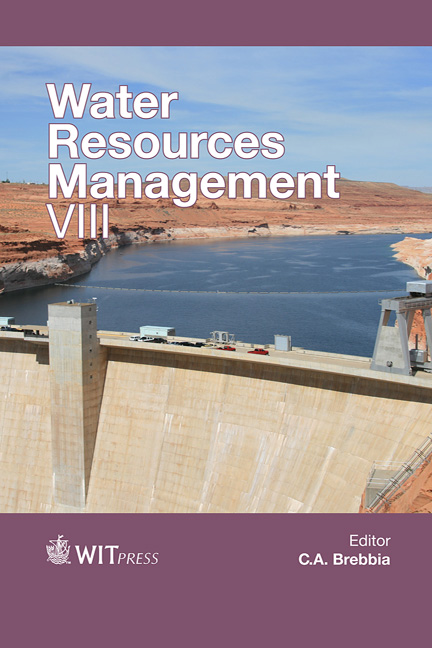Comparison Of Separation Processes For The Treatment Of Emulsified Oils From Water
Price
Free (open access)
Transaction
Volume
196
Pages
8
Page Range
505 - 512
Published
2015
Size
406 kb
Paper DOI
10.2495/WRM150431
Copyright
WIT Press
Author(s)
C. Kose, A. Genc
Abstract
In this study, vacuum filtration, coagulation-flocculation, electrocoagulation and centrifugation were applied to separate emulsified oils from water. Two different types of cutting oils (BOR and EAL) were used in the preparation of oil emulsions. BOR has smaller oil droplets than EAL when they are mixed by water. It was not possible to separate BOR from water by microfiltration but 81.7% removal efficiency was obtained for EAL. Alum and ferric chloride were used as coagulants and optimum coagulant dosages, mixing time and pH were determined by performing jar tests. When alum was used as the coagulant, the removal efficiencies for BOR and EAL were 90% and 98%, respectively. In the case of ferric chloride, 98% oil removal was obtained for both emulsions. However, the optimum ferric chloride dosages were much higher than alum. The optimum alum and ferric chloride dosages for BOR emulsion were 0.83 g/L and 6 mg/L, respectively. In the case of EAL emulsion, the corresponding amounts were 4 mg/L and 8 mg/L. The flocculation time was determined around 45 minutes. In order to obtain 98% BOR removal, the emulsion was centrifuged at an angular velocity of 3000 rpm after the coagulation-flocculation process. On the other hand, when BOR and EAL were separated by electrocoagulation, 95% removal rates can be obtained for both oils applying 40 V difference to the aluminum electrodes for 35 minutes. According to the removal efficiencies obtained from the experiments and the preliminary cost analysis it can be concluded that the best method for separating emulsified oils from waters is the electrocoagulation.
Keywords
emulsified oils, oily wastewater, coagulation, electrocoagulation, filtration, centrifugation





